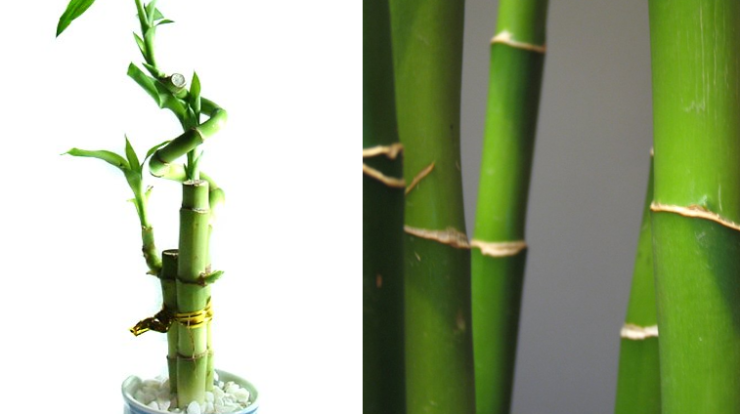-
Most people are familiar with lucky bamboos, as these plants are sold in most home and garden stores. They come in beautiful little pots and are meant to decorate any indoor space with grace. But, did you know that lucky bamboos are not bamboo plants? The real bamboo plant is extremely sturdy and can grow to impressive heights. As you may already know, there’s a large number of products made out of bamboo stems and leaves. Precisely the sturdiness and resilience of this plant makes it so appreciated for the making of various household items. However, you will never be able to make this kind of item out a lucky bamboo. Keep on reading and find out the differences between these two plants.
The lucky bamboo got its name from the fact that it looks like a bamboo plant and, according to Feng Shui and Chinese belief, it can bring luck and good fortune to its owner. This is why in China this plant is often offered as a gift. It is believed that it has the power to even out the positive energy flow within a house, attracting luck, health, and prosperity to its dwellers. The best part about owning a lucky bamboo is that it is extremely easy to care for. In comparison to other house plants, the lucky bamboo doesn’t need much to grow well and look amazing. You can even place it in those parts of the house where natural light doesn’t reach that well and still enjoy a green plant every day.
So, is there any connection between the lucky bamboo plant and the real bamboo plant? Well, apart from similarities in their look, there isn’t anything else that relates one plant with the other. The lucky bamboo looks like a bamboo due to the shape of its leaves and stems, but it belongs to an entirely different family. In other words, the lucky bamboo is a dracaena plant, so it is a cousin of the famous dracaena palm tree, commonly known as a dragon tree. On the other hand, the bamboo plant is actually a type of grass. Yes, a very large, tall, and strong grass. Of course, the family of the bamboo is quite large, encompassing dwarf species that grow to small heights, up to giant species capable of forming veritable forests. However, this family does not include the lucky bamboo. From a botanical point of view, the lucky bamboo has nothing in common with the bamboo plant.
Besides having aspect-related similarities, these two plants are rather different. They are practically different in every way possible. We can start with the water requirements. In terms of water, these two plants have very different needs. The lucky bamboo loves water and grows best in conditions of high humidity. This is why you can place a lucky bamboo in a container with pebbles, as long as the roots of the plant are fully submerged in water. Still, you will have to replace the water in this container every two weeks, to avoid the development of fungus and mold. Also, lucky bamboo could be sensitive to the additives existent in tap water, so distilled water would be a much better choice in this case. The bamboo plant, on the other hand, will require water pretty much as any grass does. It likes its soil moist, but it doesn’t enjoy it when it is soaked in water.
In terms of sun, both plants can do well in a wide variety of situations. Still, one does better in the shade, while the other will definitely appreciate more sun. The lucky bamboo plant is known for not requiring too much sun. This is why it makes such a good house plant. It can easily thrive in slightly shadier areas, as it does not stand direct sunlight. The sun’s rays could easily burn the leaves of the lucky bamboo, so you should keep it out of the direct action of the sun. True bamboo grows in forests, so it will have the light always filtered by the canopy of the trees. However, only dwarf bamboo species do well in the shade. Larger species will always appreciate some direct sunlight, as any grass does.
When it comes to keeping a plant in a pot, indoors, the lucky bamboo is definitely much better than regular bamboo. It won’t end up growing too tall, as its stems can’t support heights above 2 to 3 feet. Thus, due to their reduced heights, the lucky bamboo can easily fit in homes of all sizes. As mentioned earlier, there are smaller species of bamboo, which can grow up to 6 feet in height. These species can be maintained to miniature size with the help of pruning methods. Using a bonsai root, the bamboo is kept to a very small size. It can be attracting, but maintaining the plant at this scale requires periodic maintenance. Large species of bamboo can reach anywhere between 12 to 20 feet in height. So, they are certainly not house plants. There are also impressive giant species of true bamboo, which can grow up to 70 feet without a problem. So, now you know why a lucky bamboo is much better as a house plant than a real bamboo.
Source: https://www.myluckybambooplant.com/what-is-difference-between-bamboo-and-lucky-bamboo/


Recent Comments